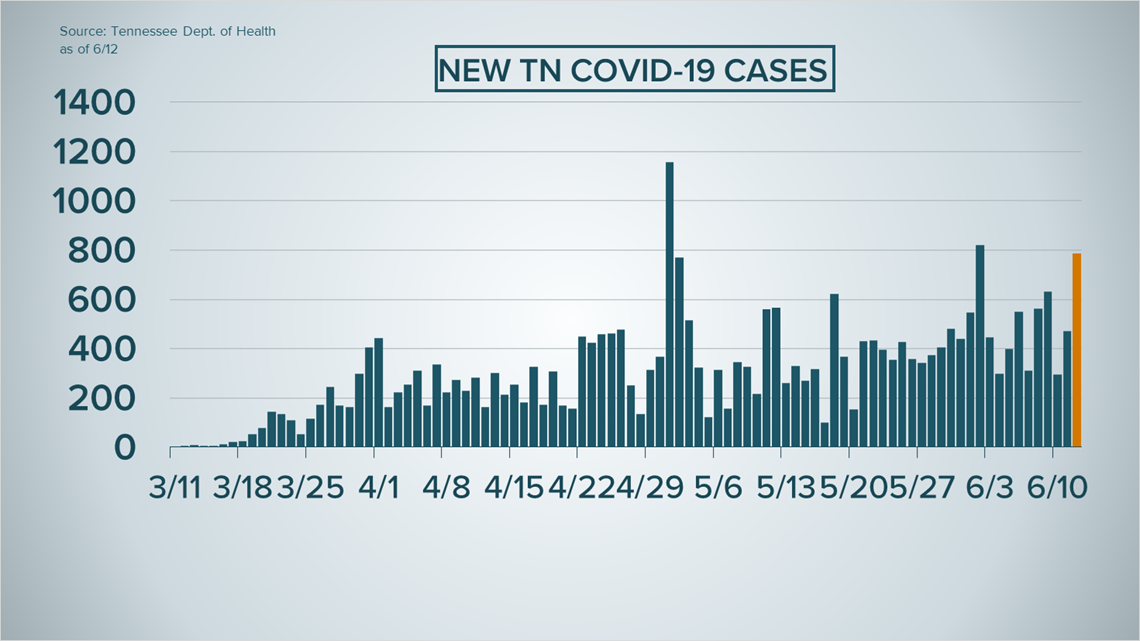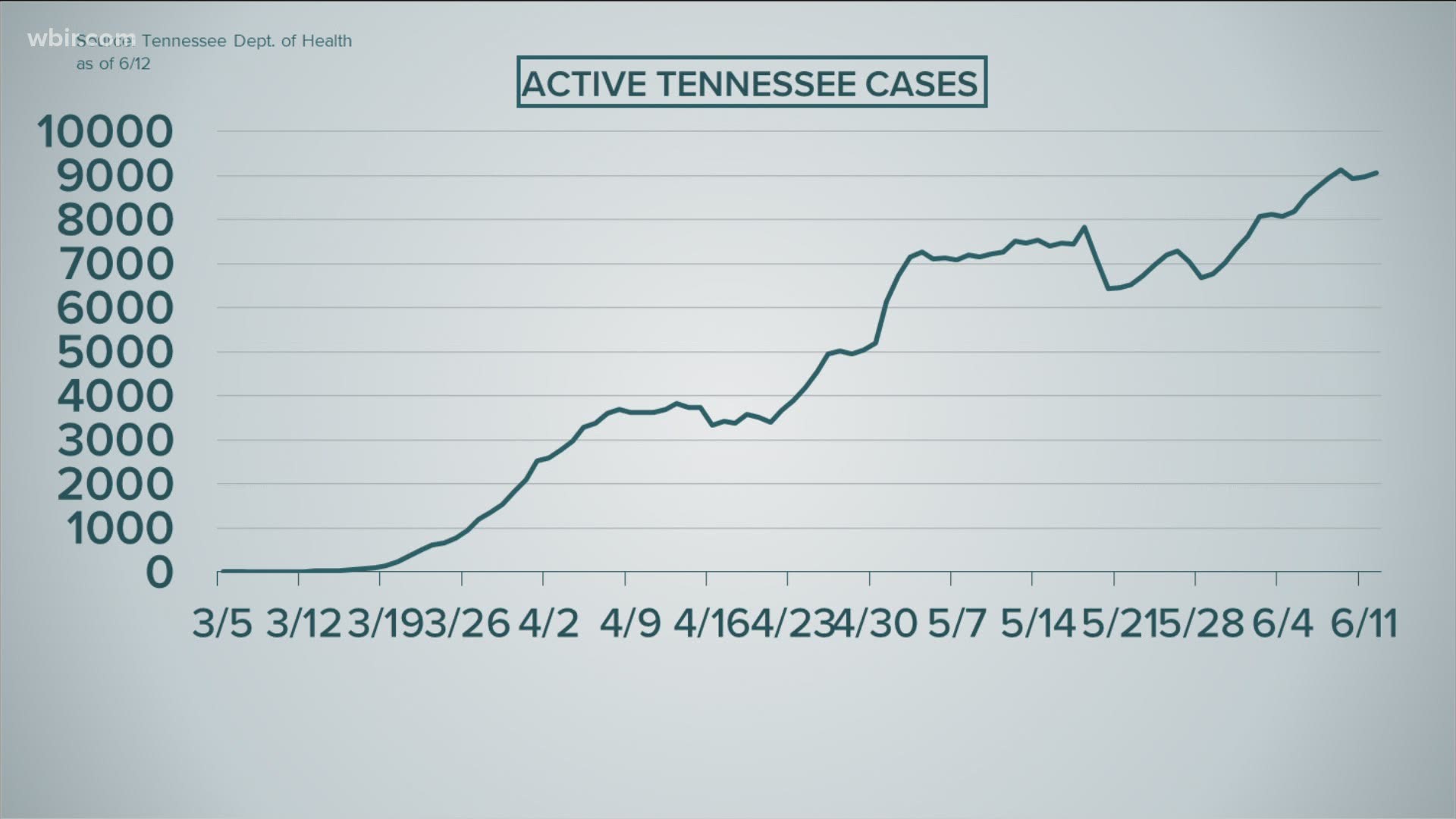NASHVILLE, Tenn. — **Editor's note: This article was originally published on June 13, 2020.*
On June 12, Tennessee's number of COVID-19 cases rose sharply once again. It jumped to 21,126 cases — up nearly 800 from the day before.
But the state department of health is now including "probable" cases in that total number, as defined by the Centers for Disease Control.
“We want to present a clear picture of the burden of COVID-19 on our state," said Tennessee Health Commissioner Dr. Lisa Piercey. "We want Tennesseans to understand the reason it may appear that we’ve had an increase in our cases and tests completed."
A probable case could meet clinical criteria and epidemiological evidence with no confirmatory laboratory testing performed; meet presumptive laboratory evidence and either clinical criteria or epidemiological evidence; or meet vital records criteria with no confirmatory laboratory testing performed, per the CDC.
In order for it to be counted as confirmed, it must meet confirmatory laboratory evidence.


TDH is also using the combined total of "confirmed" and "probable" cases, as well as "confirmed" and "probable" deaths, to calculate its "active" number.
The number of total tests completed no longer reflects how many were completed by the state's public health laboratory versus private ones. However, as of June 12, it now includes results for people who have tested positive multiple times.
The Tennessee Department of Health said that explains why the number of completed tests jumped by nearly 60,000 on Friday.
"If a person had tested positive multiple times, he or she would only show up in the number of positive tests one time, even if they had more than one positive test," said Shelley Walker, director of TDH's Office of Communication and Media Relations. "As of [Friday], every individual test (performed on different dates) is being counted accurately."
The total number of tests completed only includes polymerase chain reaction (PCR) tests, a molecular assay which detects virus particles, per TDH. Antibody test results are not included at this time.
The state has now added COVID-19 case rates by county on its website. Long term care facilities in counties below the threshold (an average of ≤10 new cases per 100,000 over the last 14 days) may consider allowing visitors, per TDH.
TDH said it will review counties "with significant numbers of incarcerated cases" on a case-by-case basis. Although Lake County does not meet the overall threshold, it does meet the criteria when excluding cases at the Northwest Correctional Complex.
The Tennessee Department of Health is also now removing long-term care facilities from its list "once the cluster is closed and no longer active." Previously, it had denoted closed clusters with asterisks.
A cluster is closed "once 28 days have passed since the last exposure to a case within the facility." 10News has reached out to the Tennessee Department of Health for more information about that change.

